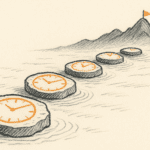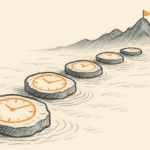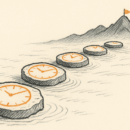What can we learn from these century-old businesses?
“If Tom Watson Sr. were to visit IBM today, he would hardly recognize what we make or the services we provide—analytics, clouds, the Jeopardy!-winning computer named in his honor, solutions for a smarter planet. But he would very much recognize why IBM is pioneering these spaces—to make the world work better through information and the tools of thinking.
If Tom Watson Jr, our second CEO, were to return, he would not recognize the structure or global footprint of IBM. But he’d instantly recognize the IBMer—the women and men who still very much believe that a company can, and must, change everything about itself … except its beliefs.”
IBM CENTENNIAL Wall Street Journal (16 June 2011)
This column almost never quotes from a company’s own literature, but every once in a while an exception has to be made. The excerpt is from a rather well-written insert in the WSJ recently, to commemorate IBM’s 100-year milestone.
Very few companies make it to the 100-year mark. Most die long before that birthday, brought down by changing technology, evolving customer preferences – but mostly by their own mistakes. In the US, Only 62 companies have appeared on the Fortune 500 list every year since1955. Another 1,952 have come and gone.
In Kenya, if you’re middle-aged or older, think back to the brands and products and companies that were big in your childhood. How many of them are around today?
That’s why centenaries are important. IBM’s isn’t the only one. Standard Chartered Bank opened its doors in Kenya in 1911, and is our oldest-established foreign bank. Magadi Soda is also 100 years old this year. So what should we learn from these long-lived titans?
Consider IBM again. It operates in a tumultuous industry – high technology – that has claimed most of its participants. The company started off making crude tabulating machines, moved to typewriters, before making its name as a dominant manufacturer of mainframe computers, mostly in America. It then moved into personal computing, before selling that business and focusing all its efforts on services. These days it is primarily a ‘cloud-based’ provider of ‘analytics’ services, operating all over the globe. It is unrecognizable from its original form.
So is that the secret – to be nimble and flexible, able to change with the times and adjust to technological upheavals? That’s the simple answer, but doesn’t address what needs to stay the same. IBM offers one constant: its value system. The company explains: it’s not referring to ethics or morals, which are a given. IBM’s values are those very particular things that make IBM, IBM.
The Economist unearthed one such value for us in its assessment of IBM’s longevity: “From the beginning, as a maker of complex machines IBM had no choice but to explain its products to its customers and thus to develop a strong understanding of their business requirements. From that followed close relationships between customers and supplier. Over time these relationships became IBM’s most important platform—and the main reason for its longevity.”
So IBM’s ability to survive is driven less by being ahead of an ever-changing curve, and more by its ability to stay bonded with its customers in its role as their trusted advisor. Put that one in your pot, good people, and cook it to your own specification. It’s less about your business genius, and more about your ability to stay true to some enduring beliefs and practices. Mostly, it’s about building a unique culture inside the company, and very strong loyalties outside. Magadi Soda and SCB have not had to change their product bases as dramatically as IBM – but they too have had to remain in a strong strategic position with their employees, shareholders and customers, mainly by staying indispensable.
So mull that over, and perhaps we’ll drink to YOUR centenary one day…

Buy Sunny Bindra's new book
The X in CX
here »
Popular Posts
- Where are you rushing to—your funeral?June 29, 2025
- How to spot a real thinkerJune 15, 2025
- The map will appear—once you start walking.July 6, 2025
- Built the app, forgot the flowJune 22, 2025
- The pause that saves usJune 8, 2025















